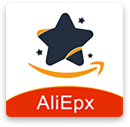

In the digital age, AI content generation tools have emerged as powerful assets, capable of churning out text, images, and more with astonishing speed and efficiency. However, as with any technological advancement, their use comes with a set of challenges, particularly when it comes to compliance. Navigating the compliance of AI content generation tools is not just a legal necessity but also a crucial step in ensuring ethical and responsible use. In this blog post, we'll delve deep into what you need to know about assessing the compliance of these remarkable yet potentially complex tools.
Understanding the Significance of Compliance
Compliance with relevant laws and regulations is the cornerstone of any legitimate use of AI content generation tools. It's not just about avoiding legal trouble; it's about maintaining the integrity of the content we produce and the trust of our audiences. When we use these tools to create content for websites, marketing materials, or any other purpose, we are responsible for ensuring that what is generated adheres to the rules set by various governing bodies.
For instance, in the realm of copyright law, AI-generated content may raise questions about ownership and originality. If an AI tool creates a piece of text that closely resembles an existing work, it could potentially infringe on someone's copyright. This is where compliance assessment becomes vital. By understanding the legal boundaries, we can take steps to ensure that our use of AI content generation tools does not lead to such infringements.
Moreover, compliance is essential for ethical reasons. AI tools have the potential to be misused to spread false information, create discriminatory content, or manipulate public opinion. By adhering to compliance standards, we can prevent these unethical practices and contribute to a more trustworthy and reliable digital ecosystem.
The Regulatory Landscape Surrounding AI Content Generation Tools
The regulatory environment for AI content generation tools is still evolving, but several key areas of law are already relevant. Copyright law, as mentioned earlier, is a major concern. In many jurisdictions, copyright protection extends to original works of authorship, and determining the authorship and originality of AI-generated content can be a complex task.
Additionally, data protection and privacy laws come into play. AI content generation tools often rely on vast amounts of data to train their algorithms. This data may include personal information, and ensuring that it is collected, stored, and used in accordance with privacy regulations is crucial. For example, if an AI tool uses user data to generate personalized content, it must do so in a way that respects the users' privacy rights.
Another area of regulation is related to false or misleading information. With the ability of AI to generate text that can seem highly plausible, there is a risk of it being used to create fake news or deceptive marketing claims. Laws governing false advertising and misinformation are therefore applicable to the use of these tools.
In some regions, there are also emerging regulations specifically focused on AI. These may include requirements for transparency in how AI systems operate, ethical guidelines for their development and use, and mechanisms for accountability in case of any adverse impacts.
Key Elements to Assess in AI Content Generation Tool Compliance
When evaluating the compliance of an AI content generation tool, several key elements need to be considered. Firstly, the tool's data sources should be examined. Where does it get its training data from? Is the data obtained legally and with proper authorization? If the data is sourced from copyrighted works without permission, it could lead to legal issues down the line.
Secondly, the output of the tool needs to be analyzed. Does it generate content that is original and does not plagiarize existing works? Are there any mechanisms in place to detect and prevent the generation of false or misleading information? For example, some advanced AI content generators have built-in filters to flag potentially problematic content.
Thirdly, the tool's compliance with privacy regulations should be assessed. How does it handle user data? Does it anonymize data when necessary and ensure that it is not misused for purposes other than what was intended? This is especially important if the tool is used in an environment where user privacy is of utmost concern, such as in healthcare or financial services.
Fourthly, the transparency of the tool's operation is a crucial factor. Can users understand how the AI generates content? Is there any documentation or explanation available about the algorithms and processes involved? Transparency helps users make informed decisions about whether to use the tool and also enables them to identify any potential compliance issues more easily.
Steps to Ensure Compliance When Using AI Content Generation Tools
Once you have a clear understanding of the compliance requirements and have assessed the key elements of the AI content generation tool, there are several steps you can take to ensure compliance in your actual use of the tool.
First, establish clear policies and procedures within your organization or for your personal use. These policies should outline how the tool will be used, what types of content are acceptable to generate, and how compliance will be monitored and enforced. For example, you could specify that all AI-generated content must be reviewed by a human editor before publication to check for any potential compliance issues.
Second, train your staff or yourself on the proper use of the tool and the relevant compliance regulations. Make sure everyone involved understands the legal and ethical implications of using AI content generation tools and knows how to identify and avoid potential compliance problems. This could involve attending workshops, reading up on the latest regulations, or participating in online courses.
Third, stay updated on the evolving regulatory landscape. As laws and regulations related to AI content generation tools continue to change, it's essential to keep abreast of the latest developments. Subscribe to industry newsletters, follow relevant regulatory bodies on social media, and engage in discussions with other professionals in the field to stay informed.
Fourth, conduct regular audits of your use of the tool. Check to see if the content generated by the tool is still compliant with the relevant regulations. This could involve periodic reviews of the data sources, output, privacy handling, and transparency of the tool. If any issues are identified, take immediate corrective action to ensure compliance is restored.
The Benefits of Ensuring Compliance
Ensuring compliance when using AI content generation tools brings numerous benefits. Firstly, it protects you from legal liabilities. By adhering to the law, you avoid potential lawsuits and costly fines that could result from non-compliance. This is especially important for businesses that rely on these tools for their marketing and content creation efforts.
Secondly, it enhances your reputation. When your audience knows that you are using AI content generation tools in a compliant and ethical manner, they are more likely to trust your content and your brand. In a world where trust is a precious commodity, this can give you a significant competitive advantage.
Thirdly, it contributes to a more ethical and responsible digital environment. By setting an example of compliant use, you encourage other users to do the same, thereby helping to reduce the misuse of AI content generation tools and the spread of unethical content.
Finally, compliant use of these tools can also lead to better content quality. By following the rules and ensuring that the content is original, accurate, and not misleading, you are more likely to produce content that is valuable and engaging to your audience.
Challenges in Assessing and Ensuring Compliance
While the importance of compliance is clear, there are several challenges in assessing and ensuring it when it comes to AI content generation tools. One of the main challenges is the complexity of the technology itself. AI algorithms can be difficult to understand, especially for those without a technical background. This makes it hard to fully assess the transparency and inner workings of the tool, which is crucial for compliance.
Another challenge is the lack of standardized regulations across different regions. What may be considered compliant in one jurisdiction may not be in another. This creates confusion for users who may be operating in multiple regions or targeting a global audience. For example, data protection laws vary significantly between the European Union and the United States, making it difficult to ensure consistent compliance when using AI content generation tools in both areas.
The rapid evolution of AI technology also poses a challenge. New versions of AI content generation tools are constantly being released, with updated algorithms and features. Keeping up with these changes and ensuring that the new versions are still compliant can be a daunting task.
Finally, there is the issue of human error. Even if the tool itself is compliant, human users may make mistakes in its use. For example, they may not properly review the content generated by the tool or may misinterpret the compliance requirements. This can lead to inadvertent non-compliance despite the best efforts to ensure compliance at the tool level.
Overcoming the Challenges: Strategies and Solutions
To overcome the challenges in assessing and ensuring compliance of AI content generation tools, several strategies and solutions can be employed. Firstly, collaboration between technical experts and legal professionals is essential. Technical experts can help to decipher the inner workings of the AI tool, while legal professionals can provide guidance on the relevant regulations. By working together, they can ensure a more comprehensive assessment of compliance.
Secondly, companies and users should aim to develop internal guidelines that are based on the most conservative interpretations of the regulations. This way, they can ensure compliance even in the face of regional differences in regulations. For example, if a particular data protection measure is required in one region but not in another, implementing it across the board can help to avoid potential compliance issues.
Thirdly, continuous learning and training should be emphasized. As AI technology evolves, users and professionals need to stay updated on the latest developments in both the technology and the regulations. This can be achieved through regular workshops, online courses, and participation in industry conferences.
Fourthly, the use of automated compliance tools can be beneficial. These tools can help to monitor the use of AI content generation tools, detect potential compliance issues, and provide alerts when necessary. For example, some tools can automatically check the originality of the content generated by the AI tool and flag any potential plagiarism issues.
Conclusion
Navigating the compliance of AI content generation tools is a complex but essential task. The increasing prevalence of these tools in our digital lives means that we must take responsibility for their proper use. By understanding the significance of compliance, the regulatory landscape, the key elements to assess, and the steps to ensure compliance, we can harness the power of AI content generation tools while also protecting ourselves from legal risks, enhancing our reputation, and contributing to a more ethical and responsible digital ecosystem.
Although there are challenges in assessing and ensuring compliance, with the right strategies and solutions, such as collaboration between technical and legal experts, developing internal guidelines, continuous learning, and using automated compliance tools, we can overcome these challenges and make the most of these remarkable technologies.
In conclusion, it's time for all of us who use AI content generation tools to take compliance seriously and work towards a future where these tools are used in a way that benefits everyone and respects the rules and ethics of our digital world.